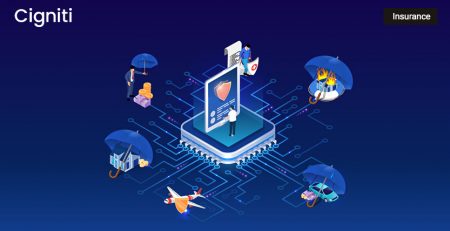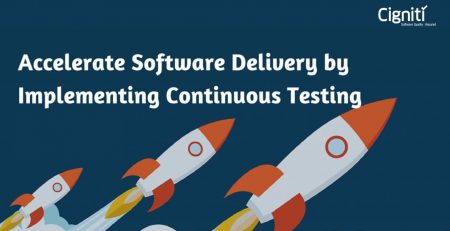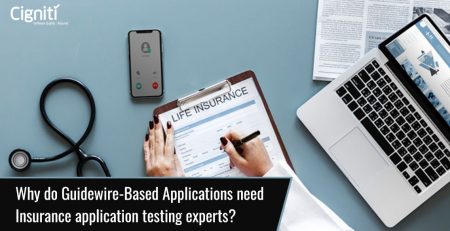Automating IFRS 17 Testing: Ensuring Compliance and Accuracy in the Insurance Industry
IFRS 17, an International Financial Reporting Standard promulgated by the International Accounting Standards Board, supersedes IFRS 4 regarding insurance contract accounting. Its effective date is January 1, 2023. IFRS 17 introduces a comprehensive revamp of the treatment of insurance contracts, entailing novel prerequisites for data, systems, and procedures that impact various departments within the organization, such as Investment, Actuarial, Accounting, Finance, and IT. This standard, IFRS 17 Insurance Contracts, establishes the guiding principles for acknowledging, quantifying, presenting, and unveiling insurance contracts.
IFRS 17 Insurance Contracts robustly establishes the foundational tenets governing the identification, quantification, representation, and revelation of insurance contracts under the framework of the accounting standard. The primary objective of IFRS 17 is to ensure that an entity furnishes pertinent and intricate information that faithfully depicts insurance contracts. This information serves as a foundation for stakeholders of financial statements to evaluate the influence of insurance contracts on the entity’s financial performance, financial position, and cash flows.
The ambit of insurance contracts subject to the purview of IFRS 17 encompasses the following:
- Insurance and reinsurance contracts underwritten by an insurance company.
- Reinsurance contracts retained by an insurance company.
- Investment contracts featuring discretionary participation features (DPF) that an insurer issues, contingent upon the insurer’s issuance of insurance contracts.
The context in which IFRS 17 operates is intricate, interconnected, and multi-faceted. Teams responsible for implementation ensure that the policies, data, processes, and systems are aptly tailored for their respective functions. Notably, there appears to be a potential shortfall in dedicating adequate testing time (including strategizing, planning, and execution). This shortfall may give rise to challenges during simulated trials and live reporting scenarios.
The core challenge stems from the novelty of IFRS 17 and its distinctive alteration of the presentation of insurance outcomes within the income statement, cash flow statement, and balance sheet. The absence of pre-existing outcomes or methodologies for benchmarking exacerbates this situation. Moreover, the complexity deepens as a collaborative effort involving finance professionals, actuaries, accountants, investment experts, IT specialists, and data professionals is imperative to deliver viable end-to-end outcomes aligned with IFRS 17 – ranging from sourcing data to generating IFRS 17 financial statements. These varied disciplines approach the situation from diverse angles, employing distinct methodologies and approaches, particularly in testing.
Implementation Challenges of IFRS 17
The data content and structure derived from business segments, products, and portfolios to facilitate IFRS 17 reporting will undergo substantial modifications for insurance entities. This necessitates adjustments to fiscal linkages and reporting systems. Furthermore, alterations to core financial statements and exposures will have repercussions on general ledgers and the chart of accounts, spanning both group and business unit levels.
- Operational Systems – Actuarial, financial, accounting, and reporting
- Data Landscape – Quality, preparedness, provisioning, storage, integration
- Procedural Framework – Risk management, reporting, actuarial processes, planning
- Policy Realm – Accounting policies, actuarial models, investment strategies
- Human Element – Collaborative efforts, cross-functional teamwork, training, knowledge exchange, external partnerships
- Monetary Aspects – Disclosures, financial implications, sensitivity analyses, communication with investors
- Performance Oversight – Reports for management insights and performance evaluation
- Organizational Structure – Altered roles and responsibilities for actuarial and finance functions, implications for outsourcing agreements
- Automation of the testing is critical for IFRS 17
Significance of Test Automation for IFRS 17
It is paramount to recognize the critical role of test automation, particularly in compliance and regulatory reporting for IFRS 17. A seamless interplay among testing tools is imperative, ensuring a cohesive and efficient testing process that addresses the intricate requirements inherent in testing. The merits of automating the testing process are multifaceted:
- Enhanced Test Coverage – The extensive scope of enterprise applications necessitates substantial resources and time for comprehensive end-to-end testing of IFRS 17. Employing test automation, primarily through user-friendly no-code and low-code solutions, empowers testing applications of diverse scales and types, facilitating rapid execution within seconds or minutes.
- Precision Augmentation – With correct implementation, test automation mitigates reliance on variable factors, ensuring consistent and projected outcomes with each iteration.
- Reduced Human Intervention – Automation curtails human involvement, minimizing errors’ likelihood.
- Accelerated Pace – Automated processes operate at a significantly accelerated pace, leading to substantial reductions in testing turnaround times.
- Process Streamlining – Automation simplifies testing, facilitating seamless data validation for IFRS 17’s novel posting logic, accounting engine, and ledger components, effectively identifying disparities.
- Establishing an Audit Trail – Test automation generates an audit trail, offering a clear record of testing actions. This trail serves as a reference for pertinent stakeholders, enabling potential replication of testing procedures in the future if required.
Test automation emerges as a pivotal enabler for navigating the intricacies of IFRS 17, offering multifaceted benefits encompass extended coverage, enhanced precision, reduced errors, expedited processes, and well-documented audit trails.
Test Automation Process for IFRS 17
The procedure for automating tests in the context of IFRS 17 encompasses the subsequent approaches:
- Definition of Automation Scope: The automation scope encompasses all applications slated for automated testing. The following factors aid in delineating the scope of test automation:
- Critical business features
- Test scenarios with substantial data volume
- Extent of business factor reuse
- Test case complexity
- Planning, Design, and Development: This phase necessitates the formulation of a test automation strategy and plans encompassing these particulars:
- Considered automation tools
- Inclusions and exclusions in the automation scope
- Preparation of automation prototype
- Schedule and script implementation timeline
- Outcome of Automation Testing
- Test Case Design: Designing and categorizing test cases into batches for a systematic test blueprint. Each batch contains select test cases targeting specific units, traversing the test sequence within a single testing cycle.
- Test Case Generation: Generating inputs for test cases typically aligns with the company’s data generation approach, enabling the shadow model to directly incorporate real-world data with minimal need for additional ETL (Extract, Transform, Load) processes.
- Test Case Transformation: Converting test case inputs from their originator’s format into the required format for the IFRS 17 accounting engine, facilitated by an input converter.
- Data Validation: Data validation, a component of the ETL process, ensures data correctness and quality before processing. Validation is performed on test case data sets across the shadow model, test case generator, input converter, and IFRS 17 accounting engine.
- Output Generation: Generating outputs, such as new posting logic, business events, journal entries, ledgers, and disclosures, in the shadow model and IFRS 17 accounting engine for test case scenarios.
- Output Extraction: Retrieving outputs from the shadow model and the IFRS 17 accounting engine.
- Detection of Discrepancies: Identifying disparities between the two sets of outcomes by importing and comparing results from the two models using a comparison tool to automate the discrepancy recognition process.
Mastering the intricacies of IFRS 17 demands a web of complexity, spanning from verifying calculations and pioneering functionalities to refining processes, systems, and data. Achieving the pinnacle of precision and comprehensiveness by the end of 2023 necessitates a substantial investment in time, meticulous planning, validation protocols, and unwavering execution.
Closing Remarks
Conventional IT testing approaches fall short of guaranteeing pinpoint accuracy for IFRS 17. Instead, a tailored testing strategy emerges as the linchpin. This strategic fusion of finance, actuarial science, accounting, data management, and IT methodologies is the bedrock for validating functionality, yielding valid, precise, and exhaustive financial insights. The real-world testing of innovative IFRS 17 facets – encompassing processes, data models, actuarial strategies, operational blueprints, and integrated systems – demands a parallel commitment to diligence, meticulous planning, and skillful execution.
Cigniti offers end-to-end test automation solutions for IFRS 17 and compliance/regulatory reporting, assuring active participation from insurance entities in the realm of compliance and regulatory reporting. With a rich history of furnishing tailored test automation solutions attuned to the specific needs of insurance companies, Cigniti stands as a trusted partner in facilitating a competitive edge. Cigniti’s comprehensive array of testing services and exceptional track record establishes it as a preferred technological ally for insurance clientele.
Need help? Talk to our insurance domain experts to learn more about the opportunities the test automation solution brings to the insurance IFRS 17 and compliance/regulatory reporting landscape.





Leave a Reply